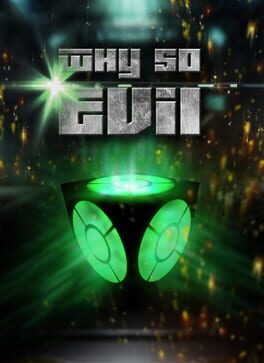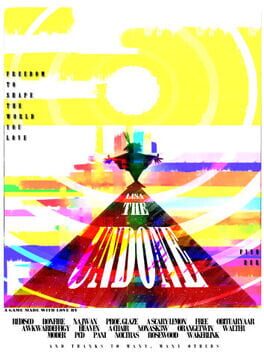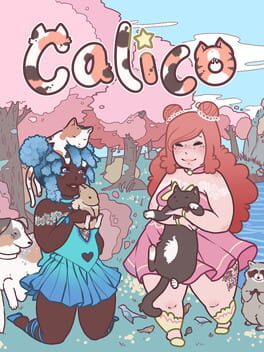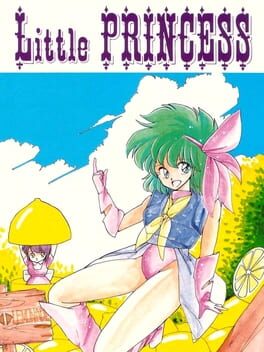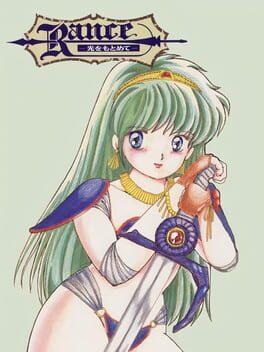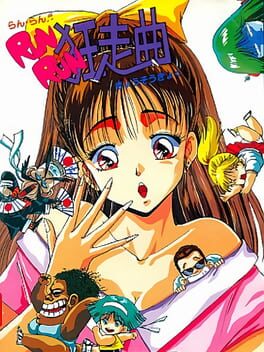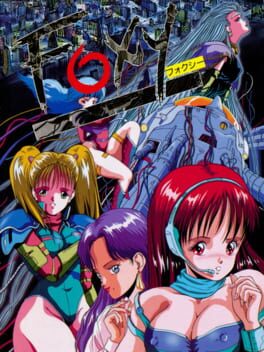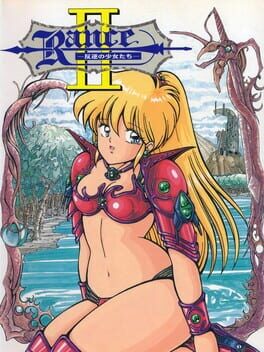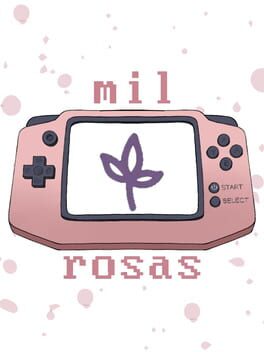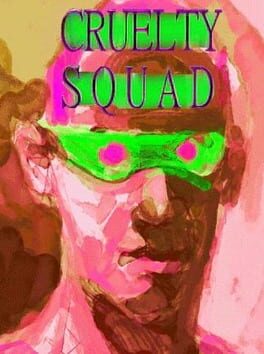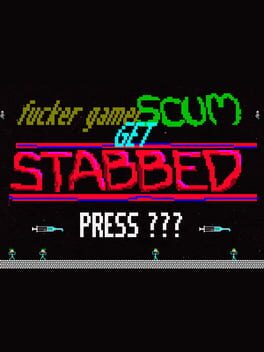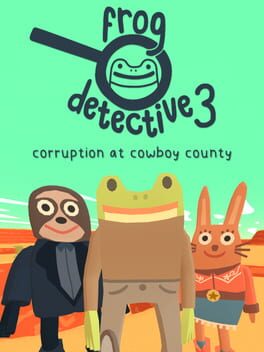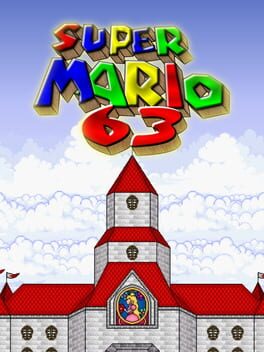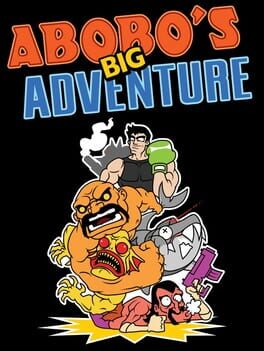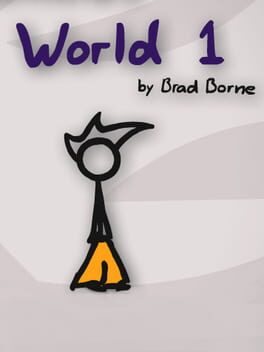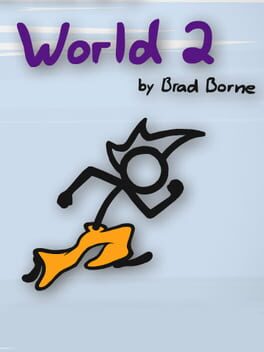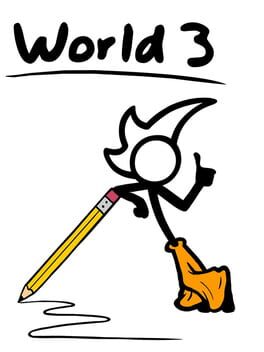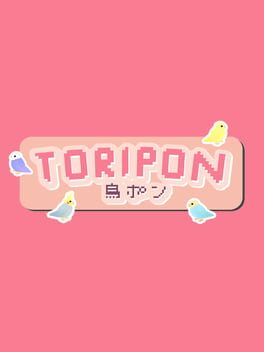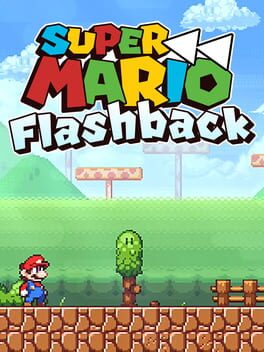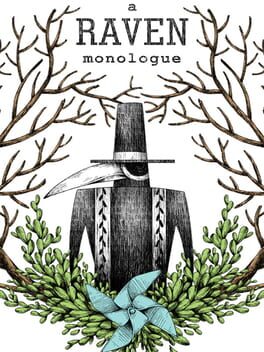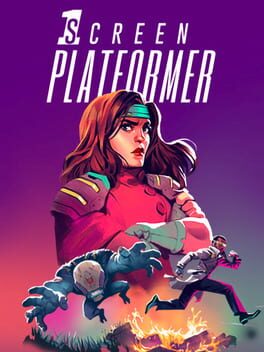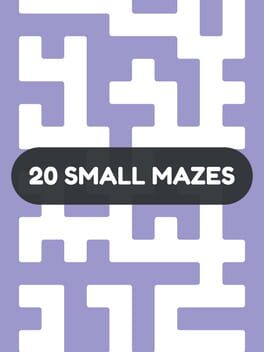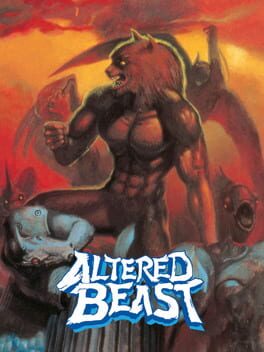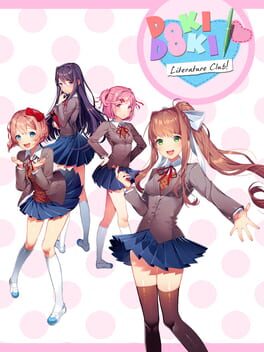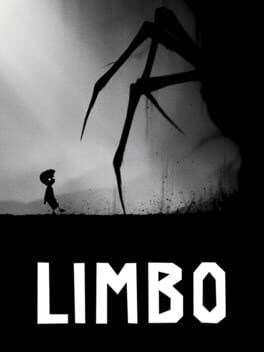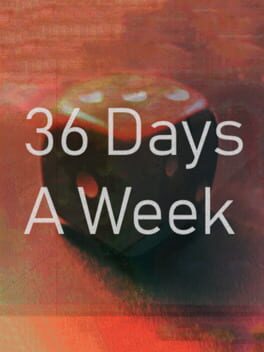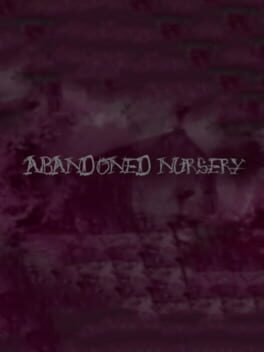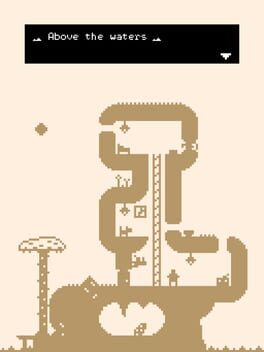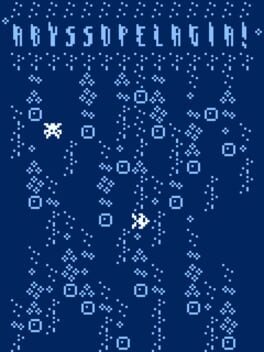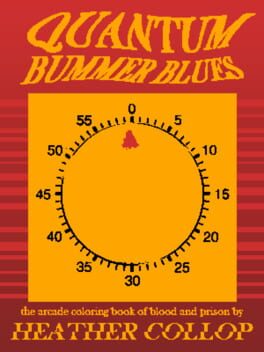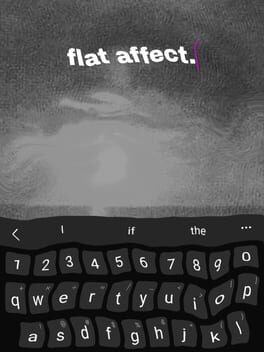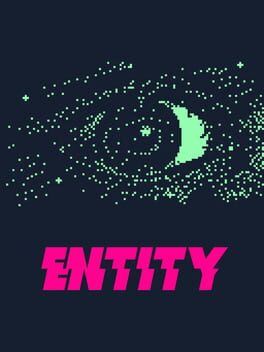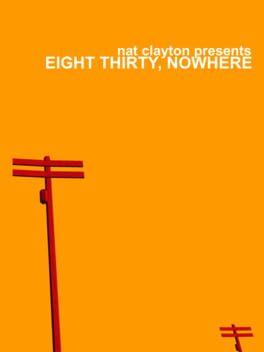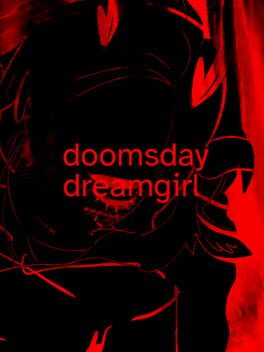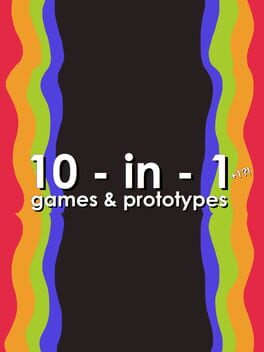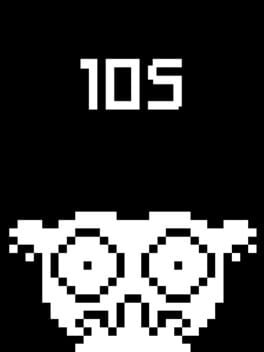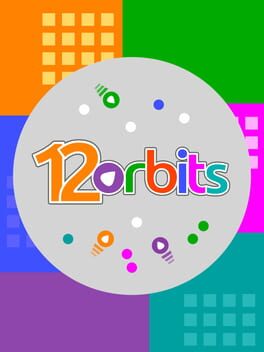Matthue_Loose
1789 reviews liked by Matthue_Loose
Why So Evil
2014
Many, many blue moons ago, I went down the rabbit hole of getting free games on Steam. What the process of getting these games involved was typically going through giveaways that would force you to subscribe to YouTubers, join Steam groups, and the like. And the end result was that you almost always got bottom-of-the-barrel shovelware. Very rarely, you'd get a gem like Distraint, but nine-point-five times out of ten, you'd get something like The Slaughtering Grounds, Galactic Hitman, or The God's Chain. If James Stephanie Sterling covered it in their series of videos about crappy Steam releases or Steam Greenlight games, you name it, there's a solid chance I paid nothing to own it.
Why So Evil isn't exactly remarkable in these regards, insomuch as it's so transparent in its lacking quality that no one in good faith could hope to have fun with it after thirty seconds of playtime. There's no menu to speak of, the game just kind of starts. All of the UI is done in the horrendous stock-Bubble type that every low-effort, half-assed Unity project made between the years 2011-2018 used to death, so even if you refuse to play the thing, you know. All of this being charitable, however; the screenshots alone were enough to warn off potential buyers, they did not try to hide this at all. Essentially, this wouldn't have been out of place on the CD my brother's friend gave him full of games they'd made when we were kids. Except this had a pricetag on it. I pity anybody who bit that bullet long before Steam refunds became a thing.
The funniest thing about this is that, for a game that touts bullshit difficulty, it becomes almost laughably easy on a controller. When it's not easy, it's just not that fun, and a big part of that is that there's no real meat on its bones. This is, for all intents and purposes, a tutorial project that someone expanded on but refused to build off of.
The only noteworthy thing about this game in 2024 is that you can't buy it anymore. No, not because they tried to sue Steam users, that was someone else. Because they released almost two hundred games on Steam over the course of less than two years and under different pseudonyms. Whoops!
Why So Evil isn't exactly remarkable in these regards, insomuch as it's so transparent in its lacking quality that no one in good faith could hope to have fun with it after thirty seconds of playtime. There's no menu to speak of, the game just kind of starts. All of the UI is done in the horrendous stock-Bubble type that every low-effort, half-assed Unity project made between the years 2011-2018 used to death, so even if you refuse to play the thing, you know. All of this being charitable, however; the screenshots alone were enough to warn off potential buyers, they did not try to hide this at all. Essentially, this wouldn't have been out of place on the CD my brother's friend gave him full of games they'd made when we were kids. Except this had a pricetag on it. I pity anybody who bit that bullet long before Steam refunds became a thing.
The funniest thing about this is that, for a game that touts bullshit difficulty, it becomes almost laughably easy on a controller. When it's not easy, it's just not that fun, and a big part of that is that there's no real meat on its bones. This is, for all intents and purposes, a tutorial project that someone expanded on but refused to build off of.
The only noteworthy thing about this game in 2024 is that you can't buy it anymore. No, not because they tried to sue Steam users, that was someone else. Because they released almost two hundred games on Steam over the course of less than two years and under different pseudonyms. Whoops!
Lisa: The Undone
2024
While I have never written an in-depth review of the game, I will at some point, Lisa the Painful and its subsequent follow-up-, Lisa the Joyful are simply my favorite games of all time. I have been hooked on the franchise for nearly a decade at this point which has led to me scouring the internet for additional content related to Lisa. This has led me to the slew of fangames made over the series that each individually addresses or adapts specific aspects of the original games and for the most part, are pretty good at capturing that magic. However, these fangames have generated a stigma of being abandoned or having an extremely long turn around so it was such a surprise to see Lisa the Undone release after a little over a year since its original reveal trailer.
This fangame stands out from other titles as it attempts to remake the Lisa the Joyful. As much as I love it, the original Joyful is marred with problems that exist on both a narrative and gameplay level which this fangame initially plans to address. I quickly realized that the structure and story of this game are significantly different from the original making this fangame a complete reimagining rather than a simple remake. This revelation made me especially excited as now I did not know what to expect.
I embraced many of its writing changes with open arms, and I felt I was generously rewarded for doing so. It is clear that the developers are deeply passionate about the world and lore of Lisa with large parts of this game serving to just expand on these elements. There are several moments where your crew takes a breather and you all discuss the current state of things in both the game world as well as how your characters are feeling. This is the sort of downtime time, while existed in Joyful, did not flesh out the characters to the same degree this fangame does. Buddy is no longer a raving maniac right away and Rando is not just a pushover. Elements of these personalities do exist but they are no longer the defining feature of these characters. One of my favorite changes to the writing is where you are given chances to see Buddy act like an actual child with her interacting with other kids being some of my favorite parts of the game.
The expansion of the world in Undone, is another greatly enhanced addition. The world in Joyful felt very cramped and lonely which felt accurate to the game's narrative but I much prefer Undone’s expansive setting that covers many different parts of Olathe. The world feels freeing but also extra dangerous due to your decreased fighting abilities. The expanded setting is also backed up by a slew of different unique areas to explore, really funny encounters, great sprite work, and reworked very interesting encounters. This world expansion also fleshes out each Warlord more giving them more of a build-up as well as explaining how they got into the position that they are in now. A simple cutscene that depicts all of the Warlords gives them so much more characterization that I am extremely excited to see pan out.
Finally, a lot of the writing reflects on the different worldviews one would have within the setting of Lisa. Many times, you are given the chance to talk to a character who will spout off on the current state of things and how one should react to it. While not all super interesting, certain encounters reign as some of my favorite writing in all of the Lisa games. These encounters also deliver solid answers to a lot of questions about the franchise that I have had stewing in my head for nearly a decade now. Some might be turned away from the vast amount of writing the game presents, a stark contrast to previous entries, but I think for any game to have this amount of dialogue it should be for a reimagining of Joyful.
Alongside these writing changes, new gameplay mechanics have been introduced that add extra depth to Lisa’s general gameplay. No longer does Buddy wield mastery over a Katana, instead she is given several weapons that she gains mastery over time through repeated use. This is combined with a new mask system that allows Buddy access to specific skills that relate to the mask that she is wearing. This adds a new consideration as one can plan and set up a specific loadout that would fare better for certain fights. There also exist companion combo moves that allow you to team a party member for some sort of attack or buff. These new mechanics make up for the fact that throughout the whole game, you are much weaker than you ever were in Joyful.
Some interesting new additions include a dice rolling and internal monologue mechanic. Disco Elysium directly inspired these with there being not much difference in how these mechanics are presented. The dice-rolling mechanic is my favorite of the two as it can completely how an encounter plays out and adds another consideration for your loadout as gear can change outcomes. The internal monologue is developed through specific decisions made in the game which will have Buddy’s mind start to splinter off into different ways of thinking. In the game's current state, this mechanic does little to change the narrative in any way and acts more nice flavor text.
If it is not obvious, I was utterly blown away by the quality of this fan project. As it stands this may reign as my favorite fangame for the moment. The amount of care and love put into the game's writing and world-building is palpable leaving me excited as to how the second part of the story will pan out. This is not a perfect experience however as I do think some mechanics are not as quite fleshed out as they should be leaving some parts a little underwhelming, such as being a little deceiving to your contribution towards certain outcomes. Some narrative points are not given a conclusion or a very satisfying one. I also think the balance between actual fights and reading dialogue is a little uneven at the moment. While I do like the game writing I did find myself at points wishing I could get into another encounter soon. All of these problems match the current state of the game as it has just been released and a second part is on the way. I have faith that these issues will be addressed but at the end of the day this is still a very solid video game.
If you are a fan of the original Lisa games like I am, this is a must-play. The amount of added depth to the world and interesting recontextualizations make it worth a try at the very least.
(Fun Fact: I was so excited in the first 40 minutes of this game that I quickly added it to the Backloggd database. I know it doesn’t matter but this is the first time I’ve done this and I just wanted to mention it.)
This fangame stands out from other titles as it attempts to remake the Lisa the Joyful. As much as I love it, the original Joyful is marred with problems that exist on both a narrative and gameplay level which this fangame initially plans to address. I quickly realized that the structure and story of this game are significantly different from the original making this fangame a complete reimagining rather than a simple remake. This revelation made me especially excited as now I did not know what to expect.
I embraced many of its writing changes with open arms, and I felt I was generously rewarded for doing so. It is clear that the developers are deeply passionate about the world and lore of Lisa with large parts of this game serving to just expand on these elements. There are several moments where your crew takes a breather and you all discuss the current state of things in both the game world as well as how your characters are feeling. This is the sort of downtime time, while existed in Joyful, did not flesh out the characters to the same degree this fangame does. Buddy is no longer a raving maniac right away and Rando is not just a pushover. Elements of these personalities do exist but they are no longer the defining feature of these characters. One of my favorite changes to the writing is where you are given chances to see Buddy act like an actual child with her interacting with other kids being some of my favorite parts of the game.
The expansion of the world in Undone, is another greatly enhanced addition. The world in Joyful felt very cramped and lonely which felt accurate to the game's narrative but I much prefer Undone’s expansive setting that covers many different parts of Olathe. The world feels freeing but also extra dangerous due to your decreased fighting abilities. The expanded setting is also backed up by a slew of different unique areas to explore, really funny encounters, great sprite work, and reworked very interesting encounters. This world expansion also fleshes out each Warlord more giving them more of a build-up as well as explaining how they got into the position that they are in now. A simple cutscene that depicts all of the Warlords gives them so much more characterization that I am extremely excited to see pan out.
Finally, a lot of the writing reflects on the different worldviews one would have within the setting of Lisa. Many times, you are given the chance to talk to a character who will spout off on the current state of things and how one should react to it. While not all super interesting, certain encounters reign as some of my favorite writing in all of the Lisa games. These encounters also deliver solid answers to a lot of questions about the franchise that I have had stewing in my head for nearly a decade now. Some might be turned away from the vast amount of writing the game presents, a stark contrast to previous entries, but I think for any game to have this amount of dialogue it should be for a reimagining of Joyful.
Alongside these writing changes, new gameplay mechanics have been introduced that add extra depth to Lisa’s general gameplay. No longer does Buddy wield mastery over a Katana, instead she is given several weapons that she gains mastery over time through repeated use. This is combined with a new mask system that allows Buddy access to specific skills that relate to the mask that she is wearing. This adds a new consideration as one can plan and set up a specific loadout that would fare better for certain fights. There also exist companion combo moves that allow you to team a party member for some sort of attack or buff. These new mechanics make up for the fact that throughout the whole game, you are much weaker than you ever were in Joyful.
Some interesting new additions include a dice rolling and internal monologue mechanic. Disco Elysium directly inspired these with there being not much difference in how these mechanics are presented. The dice-rolling mechanic is my favorite of the two as it can completely how an encounter plays out and adds another consideration for your loadout as gear can change outcomes. The internal monologue is developed through specific decisions made in the game which will have Buddy’s mind start to splinter off into different ways of thinking. In the game's current state, this mechanic does little to change the narrative in any way and acts more nice flavor text.
If it is not obvious, I was utterly blown away by the quality of this fan project. As it stands this may reign as my favorite fangame for the moment. The amount of care and love put into the game's writing and world-building is palpable leaving me excited as to how the second part of the story will pan out. This is not a perfect experience however as I do think some mechanics are not as quite fleshed out as they should be leaving some parts a little underwhelming, such as being a little deceiving to your contribution towards certain outcomes. Some narrative points are not given a conclusion or a very satisfying one. I also think the balance between actual fights and reading dialogue is a little uneven at the moment. While I do like the game writing I did find myself at points wishing I could get into another encounter soon. All of these problems match the current state of the game as it has just been released and a second part is on the way. I have faith that these issues will be addressed but at the end of the day this is still a very solid video game.
If you are a fan of the original Lisa games like I am, this is a must-play. The amount of added depth to the world and interesting recontextualizations make it worth a try at the very least.
(Fun Fact: I was so excited in the first 40 minutes of this game that I quickly added it to the Backloggd database. I know it doesn’t matter but this is the first time I’ve done this and I just wanted to mention it.)
The kids I knew who had this game would bring their Pokéwalkers to school and pay other kids to clip them on and run around to rack up experience throughout the day.
Performing this dirty work for the other kids was my only experience ever "playing" this game but it was a job that I enjoyed so I give that experience three and a half stars.
Performing this dirty work for the other kids was my only experience ever "playing" this game but it was a job that I enjoyed so I give that experience three and a half stars.
Pitfall!
1982
App Store revisionism made me think this game was an auto runner for years.
Pitfall is a novelty. Pitfall wasn't always a novelty. Pitfall is probably one of the best games on the 2600, even if that doesn't really mean anything. 3D Tic-Tac-Toe is one of the best games on the 2600 if you can convince a friend to play it with you, if you want a measure of how little it means to be "one of the best games on the 2600." But once upon a time, Pitfall was one of the most sprawling video games ever developed, one you had to spend several weeks slowly, methodically mapping out and then several more improving your executional skill to be able to get even remotely close to beating it.
Nowadays, after running around aimlessly for 10 minutes or so, you can just look up a map of the game. If you then decide to follow along, you'll probably get maybe 70% of the way through before time runs out even with heavy use of emulator rewind. Then you'll probably look up the TAS and see that you've got less than 2 minutes of wiggle room from frame perfection if you want to "beat" Pitfall. I did not beat Pitfall.
Pitfall is a novelty. Pitfall wasn't always a novelty. Pitfall is probably one of the best games on the 2600, even if that doesn't really mean anything. 3D Tic-Tac-Toe is one of the best games on the 2600 if you can convince a friend to play it with you, if you want a measure of how little it means to be "one of the best games on the 2600." But once upon a time, Pitfall was one of the most sprawling video games ever developed, one you had to spend several weeks slowly, methodically mapping out and then several more improving your executional skill to be able to get even remotely close to beating it.
Nowadays, after running around aimlessly for 10 minutes or so, you can just look up a map of the game. If you then decide to follow along, you'll probably get maybe 70% of the way through before time runs out even with heavy use of emulator rewind. Then you'll probably look up the TAS and see that you've got less than 2 minutes of wiggle room from frame perfection if you want to "beat" Pitfall. I did not beat Pitfall.
Calico
2020
Absolute fever dream of a game. I created a busty, maroon-skinned abomination of indeterminable gender who Naruto ran everywhere, bounced side to side on the spot whenever left idle as if they had some kind of severe hyperactive disorder, and sported a flattop haircut literally colored with one the wallpaper patterns. Shockingly my custom avatar still wasn’t the strangest thing in this world where nearly every inhabitant is gay and you can hilariously ragdoll animals' limp bodies at any time by spinning them around your head like pizza dough. Everything from the modern era Cartoon Network visual aesthetic to the fact that you shrink down to the size of an insect and launch yourself around the kitchen on wooden spoons (because apparently that's easier than just walking to the fridge at normal height) to cook gives the impression that a bunch of members of the LGBT community got together, dropped acid, and made an itch.io meme parody of Animal Crossing.
Once you get past all the weirdness of the magical mushroom forests and potions that turn you into humanoid cats though, you really are simply doing fairly typical life simulator tasks of performing favors for the locals to improve your relationships while trying to open up new areas of the island and manage a cafe. It's a genuinely charming and fun experience, even if the constant backtracking to and fro between NPCs in different sections of the map can get a bit annoying. There are plenty of optional smaller distractions for you to engage in as well, such as finding every critter or completing all the baking minigames to fully flesh out your menu of delectable goodies for customers to enjoy. The amount of queer representation will also be a delight for many. You interact with at least two openly lesbian couples, a plethora of small details on clothing or in dialogue hint at a wider array of diverse sexual orientations for the cast, and special care is given so that you can know every character's pronouns if you want to (yes, there is a they/them).
Unfortunately, Calico does have one pretty serious shortcoming, and that's how unlike the Stardew Valleys and Sims of the genre there is a clear ending point here. What's worse is that it won't take you long to reach it either. After a handful of hours, you'll have legitimately burned through all there is to do and have no reason to come back, possibly ever. Heck, even your business technically runs itself as once you create a tasty treat for the first time, subsequent batches magically and automatically produced themselves freeing you up to explore other activities. Whether the title's relatively brief lifespan is a dealbreaker or not will come down to individual preference. Personally, I think the uniquely gonzo style and endearingly quirky mechanics make it worth recommending if you're looking for something different in spite of the $12 price tag.
7.8/10
Once you get past all the weirdness of the magical mushroom forests and potions that turn you into humanoid cats though, you really are simply doing fairly typical life simulator tasks of performing favors for the locals to improve your relationships while trying to open up new areas of the island and manage a cafe. It's a genuinely charming and fun experience, even if the constant backtracking to and fro between NPCs in different sections of the map can get a bit annoying. There are plenty of optional smaller distractions for you to engage in as well, such as finding every critter or completing all the baking minigames to fully flesh out your menu of delectable goodies for customers to enjoy. The amount of queer representation will also be a delight for many. You interact with at least two openly lesbian couples, a plethora of small details on clothing or in dialogue hint at a wider array of diverse sexual orientations for the cast, and special care is given so that you can know every character's pronouns if you want to (yes, there is a they/them).
Unfortunately, Calico does have one pretty serious shortcoming, and that's how unlike the Stardew Valleys and Sims of the genre there is a clear ending point here. What's worse is that it won't take you long to reach it either. After a handful of hours, you'll have legitimately burned through all there is to do and have no reason to come back, possibly ever. Heck, even your business technically runs itself as once you create a tasty treat for the first time, subsequent batches magically and automatically produced themselves freeing you up to explore other activities. Whether the title's relatively brief lifespan is a dealbreaker or not will come down to individual preference. Personally, I think the uniquely gonzo style and endearingly quirky mechanics make it worth recommending if you're looking for something different in spite of the $12 price tag.
7.8/10
Vampire Survivors
2021
All of the let's play narration for these random-build-focused slot-machine-action-games is like 'ohh after your 50th run you'll have enough gopher coins to now unlock the Zuckerberg's Icon so now when you play Billy Boy and choose the Steven Stone for your 14th Arcana Tier you'll be able to Yummymax your way past the 4th Tier of Encroachening when you face the waves of 23 Yeti-men. Make sure to spend you 1.0% APR Slammy Shards only on Subtle-enchanted Attack Boosts to make sure the chance of reaching Heaven is fulfilled on a blue day! Like comment and subscribe
Infinite Craft
2024
Aviary Attorney
2015
The Beginner's Guide
2015
This review contains spoilers
Recommended by gomit as part of this list.
When I was in middle school, I pirated a copy of RPG Maker VX Ace and said "I'm going to make a video game." My very first project was a joke game based on those MLG memes (the air horns, the crosshairs, "MOM GET THE CAMERA!", the works) and it was rough. Even in the limited, easy-to-use confines of RPG Maker, I could barely figure out how to program a map transition, or even set up a basic variable flag. I managed to program one boss fight and gave up. Over the years, ideas would come and go, only ever ending up half-baked ideas that were excuses to try something new, like writing music or learning digital art. An isometric Bully-clone. A Persona 3-style dungeon crawler. The mandatory Quirky Earthbound-Inspired RPG that all indie developers make at some point. A cosmic-horror JRPG with anime girls. All of these ideas living in the margins of sketchbooks or as slap-dash digital sprites drawn with my shitty dollar store mouse. It would take me until I was 20 (7 whole years from the day I pirated that copy of VX Ace!) to actually publish my first completed project. I would feign to call myself a "game developer", but I bring this up because I think it's a substantial part of my life that colors my view of The Beginner's Guide.
The Beginner's Guide is an hour long interactive experience that serves as a commentary on both artist and audience, and the relationship between the two. Before the twist revealed in the second to last chapter of the game, the use of this fictional developer (Coda), their oeuvre, and the Director's Commentary provided by the psuedo-fictional caricature of The Beginner Guide's own creator (Wreden) weave this tale of artistic expression and burnout through the medium most infamous for how it chews up and spits out its creators: video games. The arc we witness of finding the joy in creation, fixating on some kind of platonic ideal for your work, before spiraling and losing your passion, realizing that you're burnt out and that throwing yourself in the grinder day-in day-out isn't going to give you the results you want is something that I as a struggling creative myself can sympathize with.
But after that twist is revealed, that Coda didn't burn out from creative strain, but from being subject to an audience that wanted to live vicariously through his work and pick apart his very being, there is a much more universal struggle revealed: the need for validation and external approval, and the purpose of art. Wreden using Coda's work to validate himself by presenting it to other people, despite Coda's wish to keep his work private; Wreden modifying Coda's games to provide more concrete meaning so as to fit in-line with Werden's sensibilities, even when it was established in an earlier chapter that Coda believed that games didn't need to be so objective or finished; Werden trying so hard to understand Coda's work that he armchair analyzes a creative, when Coda never meant nor really wanted his work to be so emotionally open and raw. The age of hours-long YouTube video essayists and Armchair Critics on Media Logging Websites (wink wink nudge nudge) have made all of this behavior resonate years after release, of people trying to gain validation by analyzing art and showing that they get it, using media as a springboard to share their own ideas and struggles, gain their own audience via their ability to read into art, commodifying the idea of the creative and their struggles to make their body of work seem so much more unique and genuine and meaningful. Publishing anything runs that risk but nowadays putting even the slightest fragment of your soul into something potentially thousands if not millions can observe and pick apart and psychoanalyze borders on cosmic horror.
It begs the question of what art and self-expression is supposed to do for an audience. Do we really know an artist just because they made something emotionally vulnerable? Do we know them even if the art isn't overtly personal? Is it bad to not look into a work? Is it bad to look too much into something? How much should we analyze of an author's persona, and at what point does it stop being media analysis and shift into armchair psychology? That last minute twist raises a lot of tough questions about how we as consumers engage with art and what makes it work so well is that the twist doesn't invalidate the first 95% of the game. It manages to be about two conflicting subjects without really cancelling each other out with the questions being raised by both halves of the game, and as both artist and critic, I don't have any real answers for the conundrums it presents. Would it have been better to look at this as a metaphor for Werden and his release of Stanley Parable, or is that doing exactly what the Werden in Beginner's Guide did by trying to read into someone's personal life based solely on their published work? Am I wrong to have tried to connect this piece of art to my own life experiences, or did it help enhance my enjoyment? Am I engaging with this medium correctly by writing all these words? Would I ever want this to happen to me and my own body of work?
Who knows.
When I was in middle school, I pirated a copy of RPG Maker VX Ace and said "I'm going to make a video game." My very first project was a joke game based on those MLG memes (the air horns, the crosshairs, "MOM GET THE CAMERA!", the works) and it was rough. Even in the limited, easy-to-use confines of RPG Maker, I could barely figure out how to program a map transition, or even set up a basic variable flag. I managed to program one boss fight and gave up. Over the years, ideas would come and go, only ever ending up half-baked ideas that were excuses to try something new, like writing music or learning digital art. An isometric Bully-clone. A Persona 3-style dungeon crawler. The mandatory Quirky Earthbound-Inspired RPG that all indie developers make at some point. A cosmic-horror JRPG with anime girls. All of these ideas living in the margins of sketchbooks or as slap-dash digital sprites drawn with my shitty dollar store mouse. It would take me until I was 20 (7 whole years from the day I pirated that copy of VX Ace!) to actually publish my first completed project. I would feign to call myself a "game developer", but I bring this up because I think it's a substantial part of my life that colors my view of The Beginner's Guide.
The Beginner's Guide is an hour long interactive experience that serves as a commentary on both artist and audience, and the relationship between the two. Before the twist revealed in the second to last chapter of the game, the use of this fictional developer (Coda), their oeuvre, and the Director's Commentary provided by the psuedo-fictional caricature of The Beginner Guide's own creator (Wreden) weave this tale of artistic expression and burnout through the medium most infamous for how it chews up and spits out its creators: video games. The arc we witness of finding the joy in creation, fixating on some kind of platonic ideal for your work, before spiraling and losing your passion, realizing that you're burnt out and that throwing yourself in the grinder day-in day-out isn't going to give you the results you want is something that I as a struggling creative myself can sympathize with.
But after that twist is revealed, that Coda didn't burn out from creative strain, but from being subject to an audience that wanted to live vicariously through his work and pick apart his very being, there is a much more universal struggle revealed: the need for validation and external approval, and the purpose of art. Wreden using Coda's work to validate himself by presenting it to other people, despite Coda's wish to keep his work private; Wreden modifying Coda's games to provide more concrete meaning so as to fit in-line with Werden's sensibilities, even when it was established in an earlier chapter that Coda believed that games didn't need to be so objective or finished; Werden trying so hard to understand Coda's work that he armchair analyzes a creative, when Coda never meant nor really wanted his work to be so emotionally open and raw. The age of hours-long YouTube video essayists and Armchair Critics on Media Logging Websites (wink wink nudge nudge) have made all of this behavior resonate years after release, of people trying to gain validation by analyzing art and showing that they get it, using media as a springboard to share their own ideas and struggles, gain their own audience via their ability to read into art, commodifying the idea of the creative and their struggles to make their body of work seem so much more unique and genuine and meaningful. Publishing anything runs that risk but nowadays putting even the slightest fragment of your soul into something potentially thousands if not millions can observe and pick apart and psychoanalyze borders on cosmic horror.
It begs the question of what art and self-expression is supposed to do for an audience. Do we really know an artist just because they made something emotionally vulnerable? Do we know them even if the art isn't overtly personal? Is it bad to not look into a work? Is it bad to look too much into something? How much should we analyze of an author's persona, and at what point does it stop being media analysis and shift into armchair psychology? That last minute twist raises a lot of tough questions about how we as consumers engage with art and what makes it work so well is that the twist doesn't invalidate the first 95% of the game. It manages to be about two conflicting subjects without really cancelling each other out with the questions being raised by both halves of the game, and as both artist and critic, I don't have any real answers for the conundrums it presents. Would it have been better to look at this as a metaphor for Werden and his release of Stanley Parable, or is that doing exactly what the Werden in Beginner's Guide did by trying to read into someone's personal life based solely on their published work? Am I wrong to have tried to connect this piece of art to my own life experiences, or did it help enhance my enjoyment? Am I engaging with this medium correctly by writing all these words? Would I ever want this to happen to me and my own body of work?
Who knows.
28 lists liked by Matthue_Loose
by Zanes |
622 Games
by Erato_Heti |
59 Games
by Jokya |
205 Games
by maradona |
118 Games
by Onilux |
70 Games
by letshugbro |
108 Games
by jakobvongunten |
332 Games
by Erato_Heti |
44 Games
by AlexaLily |
78 Games
by mosespippy |
1097 Games
